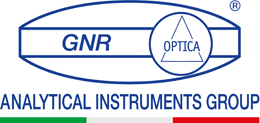Oriented Aggregate Mounts for Clay minerals identification
Clays consist mainly of clay minerals, sandy-silty, oxide, sulfate and amorphous fractions.
Clay minerals are an important group of minerals (phyllosilicate), because they are among the most common products of chemical weathering, and thus are the main constituents of the fine-grained sedimentary rocks called mudrocks. Clay minerals are the main constituent of soils: their understanding is important from an engineering point of view, e.g. in drilling applications, as some minerals expand significantly when exposed to water.
Clay minerals are also used extensively in the ceramics industry and are thus important economic minerals[1].
The correct identification of clay minerals is very important[2]: the clay fraction is separated from the sample and prepared as an oriented aggregate on glass slides to enhance diagnostic basal reflections signal.
The corresponding d-spacing contraction or expansion during treatments allows a clear identification, especially if layer interstratification is present. Typical treatments ar: air drying, glycolation with ethylene glycol, heating to 400 °C and 550 °C. Diffraction pattern collection must start at low angles (2θ< 5 deg.) in order to collect basal reflections at very large d-spacings (e.g. Smectite, Chlorite groups)[3].
In the example reported below a Bentonite sample (SWy-2) was deposited directly as an oriented aggregate on a glass slide. First air drying and then ethylene glycol treatments were performed.
Diffraction pattern were collected from 2θ=3 to 35 deg by GNR Europe 600 diffractometer with Cu FF anode, Ni filter and CeleriX 640 linear detector.
The blue pattern represents the air dried sample: the red vertical bar corresponds to Na-Montmorillonite phase 001 peak (d~14 Å) with different water layers (1 to 2), while the green one the Illite 001 (d~10 Å). Quartz (101) peak is visible at 26.64 deg, while Feldspars are detected in 27.1-27.5 deg region.
The clear difference after glycolation (red pattern) is the enhanced signal of the Montmorillonite basal peak and its shift to larger d values (~17 Å), which is compatible with a glycolated-Montmorillonite clay mineral (grey bar), according to ICDD PDF4 and USGS Clay Mineral Identification Flow Diagram[1].
Higher orders (002, 003, 004, 005 and 006) are visible now too. Illite is unaffected by glycolation, as expected.
[1] http://www.tulane.edu/~sanelson/eens211
[2] F. Bergaya, B.K.G. Theng and G. Lagaly, Handbook of Clay Science, Developments in Clay Science, Vol.1 2006 Elsevier.
[3] A laboratory Manual for X-Ray Powder Diffraction, USGS, http://pubs.usgs.gov/of/2001/of01-041/
[4] https://pubs.usgs.gov/of/2001/of01-041/htmldocs/flow/start.htm
Europe 600

